
Gold is eternal
Notes on the processing of gilded surfaces of the Pilsen fountains
Surface Structure — Similar to the entire fountain project, the concept of gilding the bronze gargoyles also went through a certain development. Initially, it was supposed to be a monochromatic surface covered with 24-karat gold, which would essentially optically merge into a uniform surface. Gradually, the authors sought ways to enliven this monochromatic, fairly uniform surface and to work with its undulation, contours, and coverage at the same time. A concept emerged — the so-called pixelization, based on the use of seven types of gold, or rather its seven shades, using a grid created from 80 x 80 mm gold leaf.
In the lower parts of the gargoyles, types of gold leaf alloyed with a larger quantity of base metals have been used — thus, leaves that are optically darker in color (heavier). Moving upwards towards the top and the spouts of the gargoyles, the proportion of pure gold in the laid leaves increases up to pure, fine metal in the optical division of the area. Thus, a certain meaning of verticality is also represented in this approach.
The concept of multicolored leaves also finds its inspirational source in Buddhist temple architecture and sculpture, where believers, in the course of their prayers, gradually lay gold leaves over each other on the surface of a stupa or statue, which creates a surface area with differently aged gold leaf, thus resulting in different color tonalities (e.g., the sacred kyaitkiyo boulder in Burma).
From the beginning, there were several versions of complex mathematical formulas, which were further adjusted in various ways during the process until the one was defined, according to which the shades are composed into an even distribution, creating an effect of "autumn falling leaves."
The layout of the leaves also represents a certain parallel to the multicolored structure of the pavement in the Republic Square, as well as to the colored block masonry of the St. Bartholomew Church in Pilsen. The distribution of leaves is therefore generated by a computer model; however, given the number of approximately 14,000 leaves that were needed for the surfaces of the fountain gargoyles, it is evident that the human factor also influenced their arrangement. Particularly at the edges, the computer-generated structure sometimes had to be adjusted for better optical clarity.
Given the dimensions and the challenging manipulation of the gargoyles, as well as the fact that these four- to six-ton colossi were lying and rotating during the application of the leaves horizontally, which is entirely different from their current installation, the computer model represented a useful tool.
Thanks to the pixelization concept, whose technological solution was presumably applied to the surface of the gargoyles in Pilsen in what is likely a world premiere, the gilding became active and continuously evolving.
Material Color — The seven shades of gold were achieved through the use of various types of alloying metals; silver (light yellow to yellow shade), copper (reddish to red shade), and their combinations. In some types of used gold, small quantities of palladium, nickel, or cadmium can also be found; these additives also model the subtle variations in colors of the different types of gold leaf.
In the upper half of the gargoyles, variously alloyed gold leaf of the thickness of the so-called "triple gold" was used, which is standard for exterior gilding. Nevertheless, it is still weaker than a human hair. In the lower part of the gargoyles, up to a height of about 2 m, which is more burdened by abrasive stress, variously alloyed gold leaves of greater thickness (four to six times thicker than the gold of the upper part) were applied, which were specifically supplied for this realization of the exposed parts of the gilding.
Even the thicknesses of individual leaves can be relativized. The last operation in the production of gold leaf is carried out manually, therefore the structure of the cut of individual leaves is not entirely uniform in the end. For this reason, the total consumption for the surface area of all three bronze gargoyles, approximately 72 m2, cannot be precisely measured. However, it can be estimated at around 720 grams of variously alloyed gold.
Maintenance and Texts — By pixelating the surface, visually divided into variously alloyed colored gold leaves, a surface was created that continuously changes and patinates itself. The lower part, which will be more abrasively damaged, will patinate more strongly, and because it is more burdened by darker gold, with a higher content of alloying metals, it will also start to darken more. Conversely, the top of the gargoyles, covered with 24-karat gold, will remain brighter in this proportion.
The concept of transformation over time is also offered to the authors through a comparison with the gilding of the statue of the Virgin Mary and the decorative elements on the neighboring Plague Column, both in the upper parts (statue) and in the lower section (decoration of blacksmith-worked elements), which are accessible to touch. In the square's space, this material is nothing new in this context.
Thanks to the fairly clearly defined grid, the gilded surface can be colored by applying new gold leaf "pixels" using the same technology in the form of local repairs - restoring damaged areas using appropriate methods, with timely surface rehabilitation preventing not only potential defect escalation but also being the most effective and economical.
In relation to the expected renovation, it is possible to add already prepared verses by Petr Borkovec, which were created in connection with the development of the gilded surface concept. These texts can be inscribed without the creation of relief on the surface of the gargoyles by laying gold leaf with a higher content of alloying elements, which would only slightly color differentiate them from the gilded background.
From a distance, the inscription will be imperceptible and will only be possible to uncover up close. Over time, it will gradually oxidize and disappear.
In contrast, pure gold is eternal.
David Blahout (*1972, Písek)
2001 - 2007 AVU Prague, School of Restoration of Artistic Works in Sculpture prof. Petra Siegla
since 2009 doctoral studies there; topic of the doctoral thesis: The Issues of Restoring Commesso in Pietre Dure
In the lower parts of the gargoyles, types of gold leaf alloyed with a larger quantity of base metals have been used — thus, leaves that are optically darker in color (heavier). Moving upwards towards the top and the spouts of the gargoyles, the proportion of pure gold in the laid leaves increases up to pure, fine metal in the optical division of the area. Thus, a certain meaning of verticality is also represented in this approach.
The concept of multicolored leaves also finds its inspirational source in Buddhist temple architecture and sculpture, where believers, in the course of their prayers, gradually lay gold leaves over each other on the surface of a stupa or statue, which creates a surface area with differently aged gold leaf, thus resulting in different color tonalities (e.g., the sacred kyaitkiyo boulder in Burma).
From the beginning, there were several versions of complex mathematical formulas, which were further adjusted in various ways during the process until the one was defined, according to which the shades are composed into an even distribution, creating an effect of "autumn falling leaves."
The layout of the leaves also represents a certain parallel to the multicolored structure of the pavement in the Republic Square, as well as to the colored block masonry of the St. Bartholomew Church in Pilsen. The distribution of leaves is therefore generated by a computer model; however, given the number of approximately 14,000 leaves that were needed for the surfaces of the fountain gargoyles, it is evident that the human factor also influenced their arrangement. Particularly at the edges, the computer-generated structure sometimes had to be adjusted for better optical clarity.
Given the dimensions and the challenging manipulation of the gargoyles, as well as the fact that these four- to six-ton colossi were lying and rotating during the application of the leaves horizontally, which is entirely different from their current installation, the computer model represented a useful tool.
Thanks to the pixelization concept, whose technological solution was presumably applied to the surface of the gargoyles in Pilsen in what is likely a world premiere, the gilding became active and continuously evolving.
Material Color — The seven shades of gold were achieved through the use of various types of alloying metals; silver (light yellow to yellow shade), copper (reddish to red shade), and their combinations. In some types of used gold, small quantities of palladium, nickel, or cadmium can also be found; these additives also model the subtle variations in colors of the different types of gold leaf.
In the upper half of the gargoyles, variously alloyed gold leaf of the thickness of the so-called "triple gold" was used, which is standard for exterior gilding. Nevertheless, it is still weaker than a human hair. In the lower part of the gargoyles, up to a height of about 2 m, which is more burdened by abrasive stress, variously alloyed gold leaves of greater thickness (four to six times thicker than the gold of the upper part) were applied, which were specifically supplied for this realization of the exposed parts of the gilding.
Even the thicknesses of individual leaves can be relativized. The last operation in the production of gold leaf is carried out manually, therefore the structure of the cut of individual leaves is not entirely uniform in the end. For this reason, the total consumption for the surface area of all three bronze gargoyles, approximately 72 m2, cannot be precisely measured. However, it can be estimated at around 720 grams of variously alloyed gold.
Maintenance and Texts — By pixelating the surface, visually divided into variously alloyed colored gold leaves, a surface was created that continuously changes and patinates itself. The lower part, which will be more abrasively damaged, will patinate more strongly, and because it is more burdened by darker gold, with a higher content of alloying metals, it will also start to darken more. Conversely, the top of the gargoyles, covered with 24-karat gold, will remain brighter in this proportion.
The concept of transformation over time is also offered to the authors through a comparison with the gilding of the statue of the Virgin Mary and the decorative elements on the neighboring Plague Column, both in the upper parts (statue) and in the lower section (decoration of blacksmith-worked elements), which are accessible to touch. In the square's space, this material is nothing new in this context.
Thanks to the fairly clearly defined grid, the gilded surface can be colored by applying new gold leaf "pixels" using the same technology in the form of local repairs - restoring damaged areas using appropriate methods, with timely surface rehabilitation preventing not only potential defect escalation but also being the most effective and economical.
In relation to the expected renovation, it is possible to add already prepared verses by Petr Borkovec, which were created in connection with the development of the gilded surface concept. These texts can be inscribed without the creation of relief on the surface of the gargoyles by laying gold leaf with a higher content of alloying elements, which would only slightly color differentiate them from the gilded background.
From a distance, the inscription will be imperceptible and will only be possible to uncover up close. Over time, it will gradually oxidize and disappear.
In contrast, pure gold is eternal.
Processed based on an interview conducted on July 30, 2010, in Pilsen
and using the project documentation for the surface treatment of the gargoyles
David Blahout (*1972, Písek)
2001 - 2007 AVU Prague, School of Restoration of Artistic Works in Sculpture prof. Petra Siegla
since 2009 doctoral studies there; topic of the doctoral thesis: The Issues of Restoring Commesso in Pietre Dure
The English translation is powered by AI tool. Switch to Czech to view the original text source.
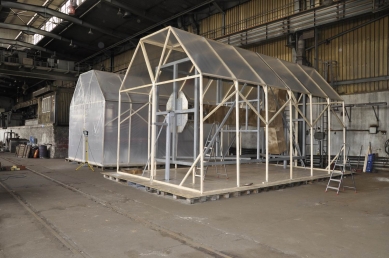
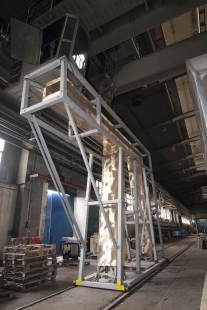
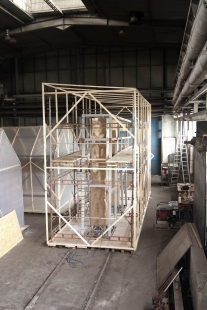
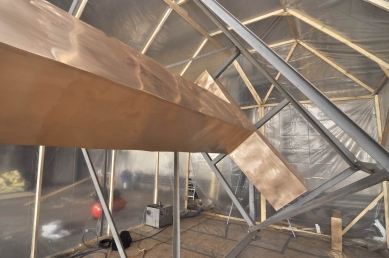
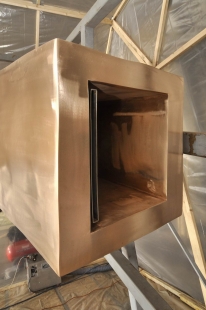
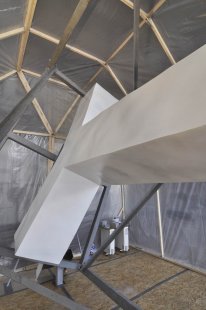
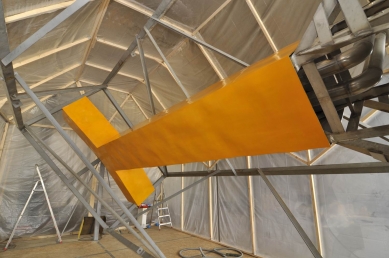
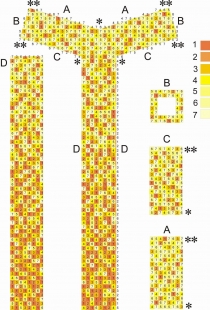
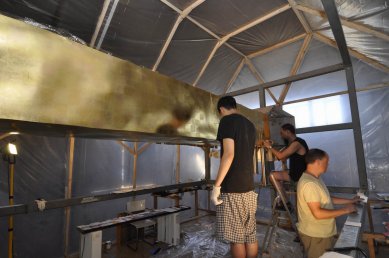
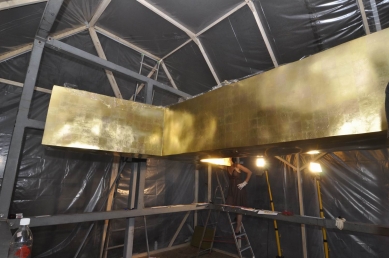
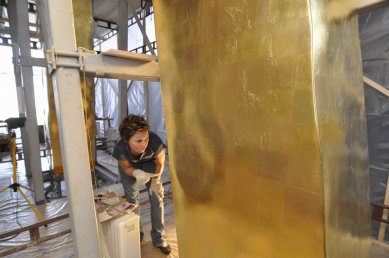
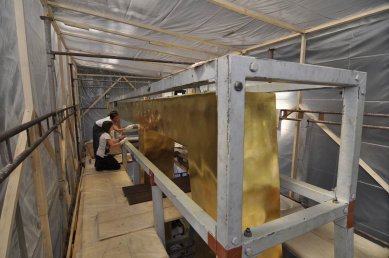
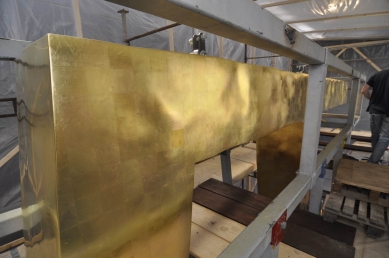
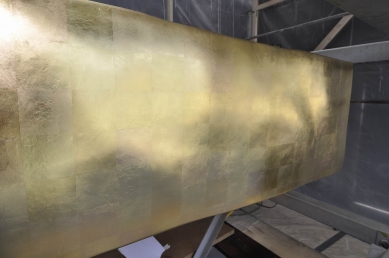
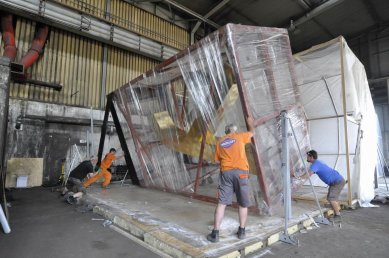
0 comments
add comment











